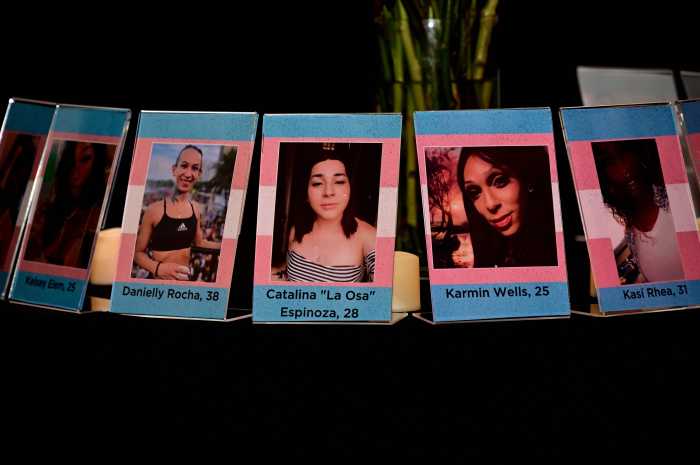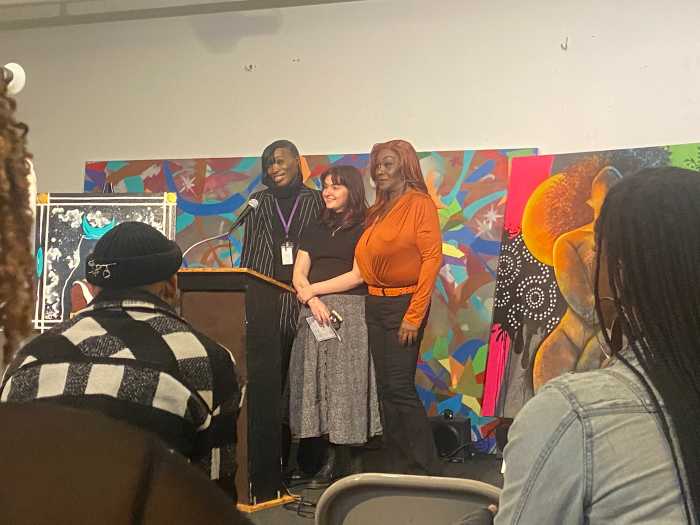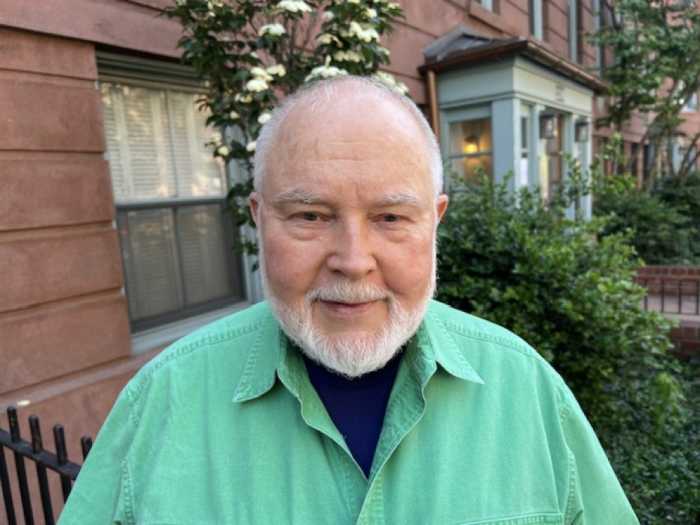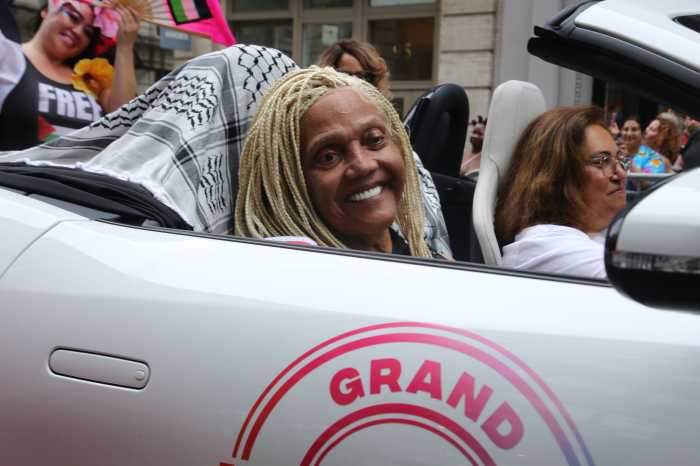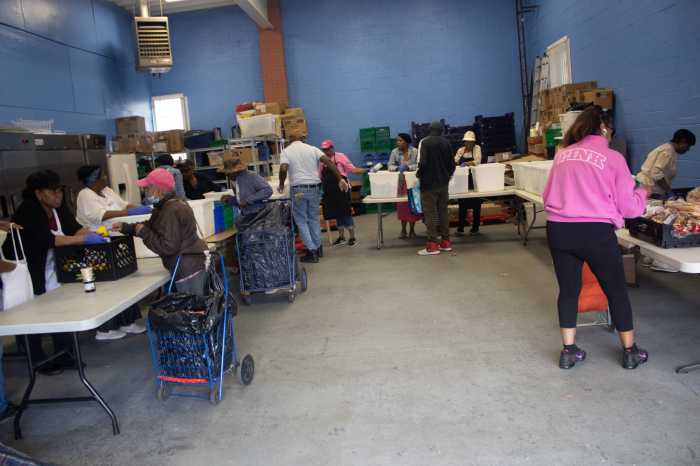Jim Levin, who played a central role in passing New York City’s gay rights bill in 1986 as both a gay activist and a member of the City Human Rights Commission, died January 24 in Austin, Texas where he moved three years ago. He was 78 and is survived by his husband, Leath Nunn, who was a principal dancer in a Venezuelan ballet company when they met in 1997.
By the time Mayor Ed Koch made Levin and Joyce Hunter the second and third out LGBTQ human rights commissioners in 1983, Levin already had a long record of activism in the streets, Democratic politics, academia, and legal circles. The gay rights bill had been introduced in 1971 — the first of its kind in the country — but was stalled by a City Council dominated by conservative Democrats from the boroughs outside Manhattan.
Though the Human Rights Commission could not act on complaints of sexual orientation discrimination absent the bill’s enactment, Levin prevailed on the agency to document gay and lesbian complaints in an official report that was a major factor in the final adoption of the gay rights law in 1986. Levin was also one of the spokespeople for the 50-group Coalition for Lesbian and Gay Rights (CLGR), as was this reporter, which revived the campaign for the bill in 1977 and saw it through to passage after numerous rejections. He was a central figure in “Rights and Reactions,” the late Phil Zwickler’s documentary on the contentious fight over the gay rights bill. In it, he recounts stories from New Yorkers who had been subjected to anti-gay abuse.
“One young lesbian,” he said, “was kicked and slapped by her father, assaulted with a wire hanger by her mother, and attacked with a knife by her sister. They kept shouting anti-lesbian remarks against her. And of course if the person can’t afford to [move out], they have to stay in the house and take that kind of brutality or just go out onto the streets. We call them ‘throwaways.’”
At the 1987 National March on Washington for Lesbian and Gay Rights, Levin marched in his bar chaps with leather activists, saying he wanted to stand with one of the more marginalized segments of the community at that time.
In the late 1980s, Levin was increasingly frustrated with the fact that Manhattan District Attorney Robert Morgenthau had no openly gay assistant district attorneys. At a meeting with Morgenthau and the DA’s assistant, Barbara Jones, as well as Christopher Lynn who had been CLGR’s counsel, Morgenthau claimed to have hired gay ADAs. Levin said, “That’s great. Who are they?” According to Lynn, “Morgenthau said, ‘We can’t expose them to public scrutiny.’ Jim said, ‘That’s the whole point!’ When Morgenthau resisted, Jim said, ‘You’d better change your mind quickly or our club is going to support” Morgenthau’s opponent.
Lynn said that Koch called him to yell at them for threatening the Morgenthau and demanded they apologize. “However,” he recalled, “later that day Barbara Jones called to say they announced the appointment of a gay liaison and the existence of one gay ADA.”
The first out gay ADA in Manhattan in 1990 was Thomas Hickey, now a longtime law clerk for Justice Rosalyn Richter, an out lesbian serving in the Appellate Division’s First Department in Manhattan. Hickey was president of NYU’s Gay and Lesbian Union and got to know Levin working on the city gay rights bill.
“He encouraged me to pursue my passion for criminal law,” Hickey said, “and in my cover letter to the DA’s office I wrote that I was openly gay.” Hickey added of Levin, “He was one of the pioneers in the 1980s and always had the warmest smile.”
Levin was not smiling when he confronted Morgenthau on another outrage — the false prosecution of gay men on morals charges for sex in public restrooms. Levin represented many of these men, often stereotypically gay men who had done nothing more than use a restroom only to be collared by police who knew it would be a cop’s word against a homosexual’s and had not witnessed any sexual conduct or even bothered trying to entrap the men. These false arrests continued for years and while Levin was able to get charges against many of the men dropped, his anger at Morgenthau for pursuing them never abated.
Father Bernárd Lynch, a gay priest activist with the gay Catholic group Dignity in the 1980s, said Levin “was an inspiration in our darkest hour during the AIDS crisis. He never ceased to motivate and support those of us who were up against the virulent hostility of the Catholic Church under John Cardinal O’Connor.”
Ken Sherrill, professor emeritus of political science at Hunter College and the first out gay elected official in New York as a West Side Democratic district leader in 1977, said that Levin “was active in all of my political campaigns, contributing time, money, acumen, advice, and morale. I’ll never forget the afternoon we spent together registering voters in the Mineshaft at Gay Male S/M Activists Bizarre Bazaar. Our voter registration table was directly across from the St. Andrew’s Cross and we spent hours answering some amazing questions from prospective voters.”
New York Law School Professor Arthur Leonard, Gay City News’ legal writer, said that Levin “was a volunteer of countless hours of pro bono legal service to people with HIV/ AIDS” through the LGBT Bar Association and the legal department at Gay Men’s Health Crisis.
Jim Levin was born in Baltimore in 1940 and moved to New York to attend Columbia Law School where, he wrote, “I decided I was gay.” He also “decided if I wasn’t going to marry and have a family, I didn’t need to practice law” and pursued a PhD in history and taught junior high school, eventually moving on to teaching at City College.
Not long after the Stonewall Rebellion in 1969, Levin developed one of the nation’s first gay studies courses and became national president of the Gay Academic Union. And he helped found the Gay and Lesbian Independent Democrats (GLID), eventually serving as the club’s president. To augment his ability to fight for gay rights, he took the bar exam in 1980 so he could represent LGBTQ people in court. Levin was the author of numerous books including “The Gay Novel in America” (1981) and the gay-themed novels “Thomas Wentworth Hill” and “Sixteen and One Half.”
Veteran gay activist John Magisano wrote, “Jim and I were members of rival factions of GLID — the progressives (of which I was a member) and ‘the Koch people.’ We disagreed vociferously in those days and yet he was always gracious and solicitous to me and I appreciated that. I respected his commitment and brilliance. He was also smokin’ hot.” Levin kept in shape as a lifelong tennis player.
A memorial service was held February 10 in Austin by Levin’s Texas friends.



